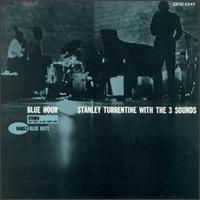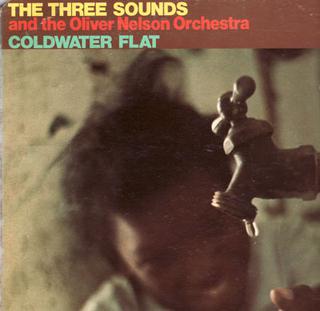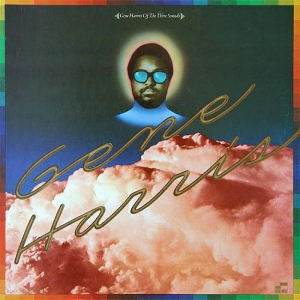
LD+3 is an album by American jazz saxophonist Lou Donaldson with the Three Sounds—consisting of rhythm section Gene Harris, Andrew Simpkins, and Bill Dowdy—recorded on February 18, 1959 and released on Blue Note later that year.

Sunny Side Up is an album by jazz saxophonist Lou Donaldson recorded for the Blue Note label and performed by Donaldson with Bill Hardman, Horace Parlan, Sam Jones, Al Harewood, with Laymon Jackson replacing Jones on four tracks.

Blue Hour is a collaboration album by jazz saxophonist Stanley Turrentine and The Three Sounds recorded for the Blue Note label and performed by Turrentine with Gene Harris, Andrew Simpkins and Bill Dowdy. The album was reissued in 2000 with an additional disc of unreleased recordings, as Blue Hour: The Complete Sessions.

Jubilee Shout!!! is an album by jazz saxophonist Stanley Turrentine, recorded for the Blue Note label in 1962, but not released until 1986. The selection was originally included on the double LP Jubilee Shouts, together with some tracks later appeared as Comin' Your Way. Said LP, however, omitted some tracks which may be found on the CD editions of both albums.

Easy Walker is an album by jazz saxophonist Stanley Turrentine recorded for the Blue Note label in 1966 and performed by Turrentine with McCoy Tyner, Bob Cranshaw and Mickey Roker. One additional track from an unreleased session arranged by Duke Pearson was added to the original CD release and another four bonus tracks recorded in 1969 and originally released on Ain't No Way were added to the 1997 CD reissue.

Introducing the 3 Sounds is the debut album by American jazz piano trio The 3 Sounds, recorded on September 16 & 18, 1958 and released on Blue Note in December that year. The trio features Gene Harris, Andrew Simpkins and Bill Dowdy.

Good Deal is the third album by American jazz trio The 3 Sounds recorded on May 20, 1959 and released on Blue Note the following year.

Moods is an album by jazz group The Three Sounds released in 1961 on the Blue Note label. It was recorded the same day Feelin' Good was recorded.

Feelin' Good is an album by jazz group The Three Sounds featuring performances recorded in 1960 and released on the Blue Note label. It was released on CD only in Japan.

Black Orchid is an album by jazz group The Three Sounds featuring performances recorded in 1962 and released on the Blue Note label. The 1998 limited CD reissue features another seven unissued tracks recorded at different sessions. It was also issued in Japan in 2015, on SHM-CD, featuring different bonus tracks recorded at the same sessions.

Out of This World is an album by jazz group The Three Sounds featuring performances recorded in 1962 and released on the Blue Note label.

It Just Got to Be is an album by the jazz group The Three Sounds with performances recorded in 1960. It was released on the Blue Note label in 1963. It was reissued on CD only in Japan, with two bonus tracks.

The Opener is an album by American jazz trombonist Curtis Fuller, recorded on June 16, 1957 and released on Blue Note later that year—his debut for the label.

Open House is an album by American jazz organist Jimmy Smith featuring performances recorded in 1960, but not released on the Blue Note label until 1968. The album didn't appear on CD until being reissued in 1992, as a twofer which also included Plain Talk, compiling all the recordings from the session.

Hey There is an album by jazz group The Three Sounds featuring performances recorded in 1961 and released on the Blue Note label. In March 2015, it was released for the first time on SHM-CD in Japan, featuring all the pieces recorded at an August 13, 1961 session, including the previously unissued "Billy Boy" and the tracks from Babe's Blues.

Vibrations is an album by jazz group The Three Sounds featuring performances recorded in 1966 and released on the Blue Note label.

Live at the Lighthouse is a live album by jazz group The Three Sounds featuring performances recorded in 1967 at the Lighthouse Club in California and released on the Blue Note label.

Coldwater Flat is an album by jazz group The Three Sounds featuring performances with an orchestra arranged by Oliver Nelson recorded in 1968 and released on the Blue Note label.

The 3 Sounds is an album by American pianist Gene Harris recorded in 1971 and released on the Blue Note label. Although it is titled after Harris' group The Three Sounds, the album is a transitional effort. Carl Burnett, the drummer from The Three Sounds, is present. Making his first appearance with Harris is bassist Luther Hughes, who would become the regular bassist of the Gene Harris Quartet in the 1990s.

Gene Harris of the Three Sounds is an album by American pianist Gene Harris recorded in 1972 and released on the Blue Note label. Although the title refers to Harris' group The Three Sounds the album is usually recognised as a solo effort as none of the other original members of the group participated in the recording.




















